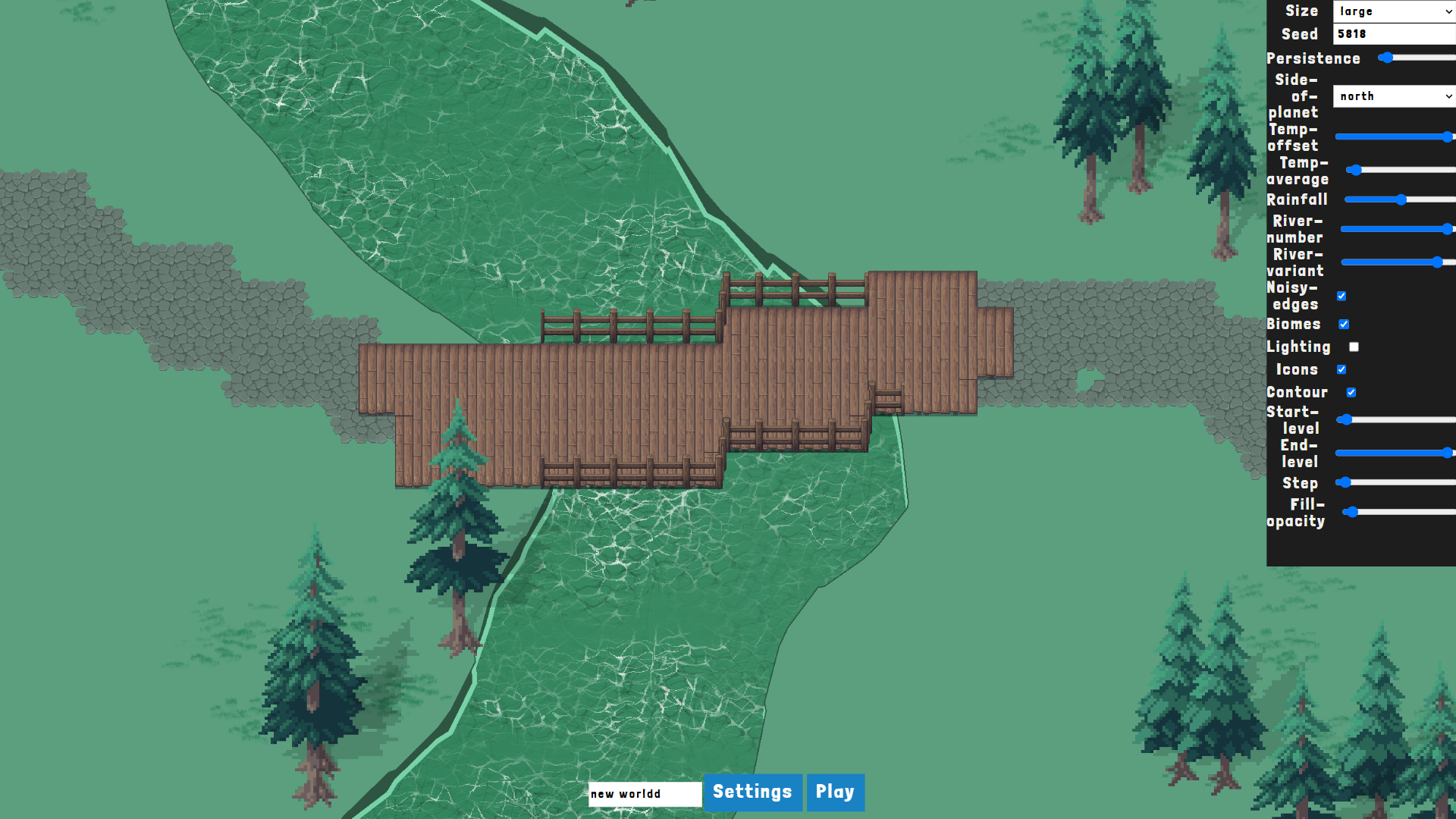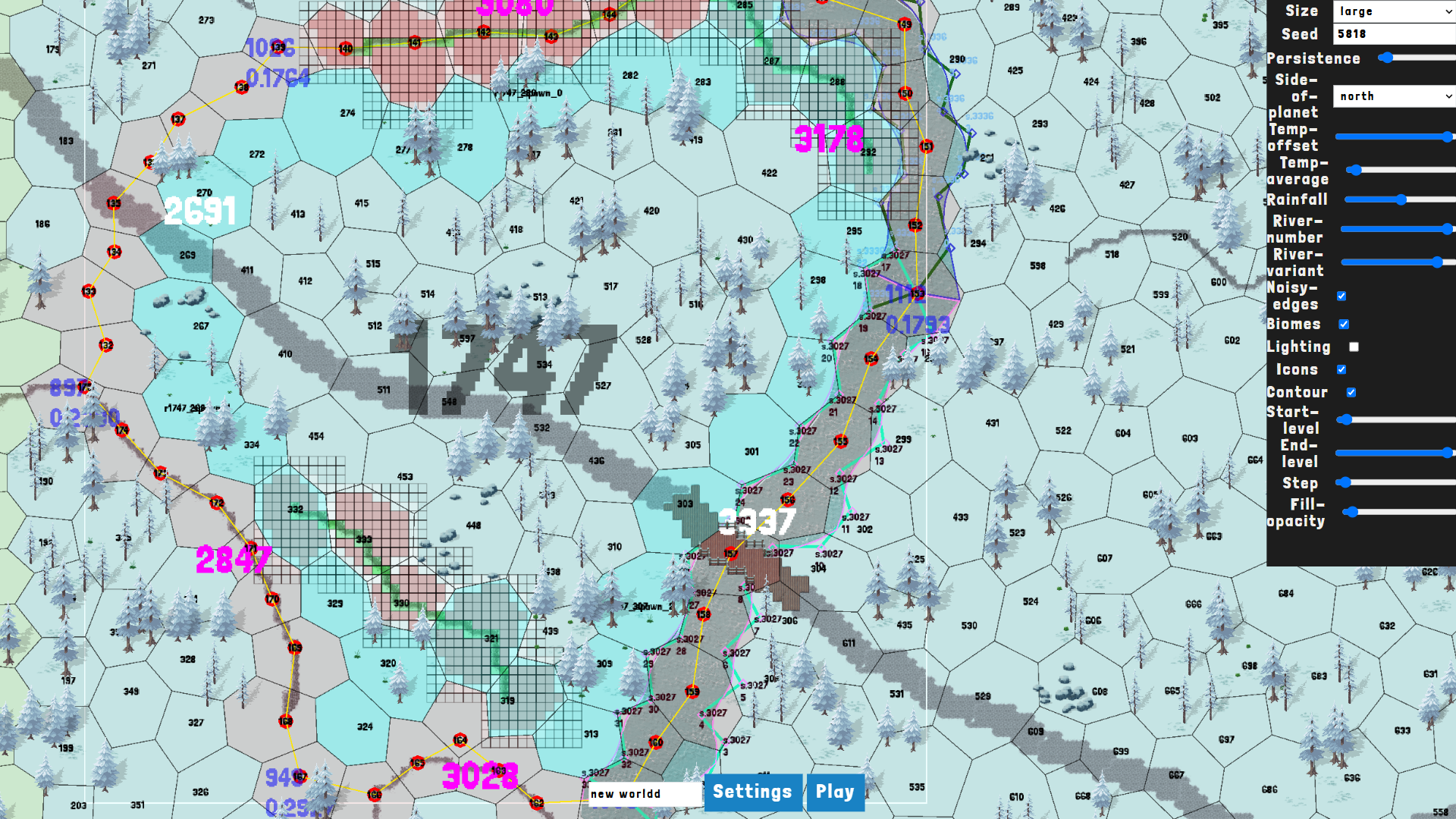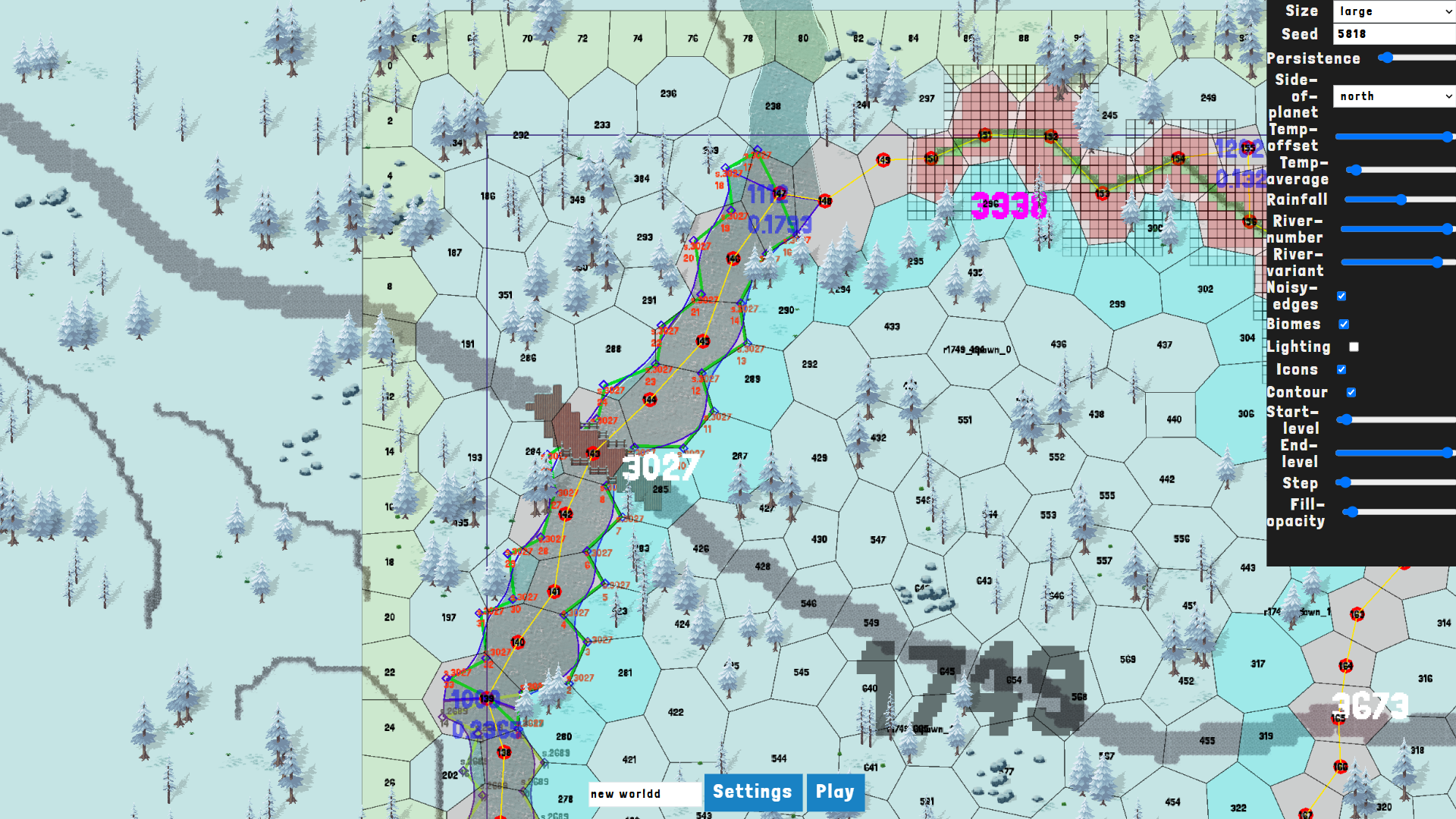World traffic - bridge2 min read

Game Development Log: Implementing a Complete Transportation System with Bridges
Introduction
As I progress in the development of my game, one of the critical tasks is to implement a fully functional transportation system. A significant challenge arises when transportation routes intersect with rivers, necessitating the construction of bridges. Given that rivers are situated between two regions, the shape of the river and the seamless integration of bridge tiles become complex tasks that require careful handling.
The Challenge
Rivers in my game do not have dedicated scene block data like regions. Consequently, a bridge must cover one scene block from each of the two adjacent regions. This setup means that the generated tile map data for the bridge is stored in the scene block tile data of both regions. To avoid rendering issues, it is crucial to eliminate overlapping tiles to prevent duplication.


Debugging River Shapes
To address this, I have generated debug images for the river shapes in two adjacent regions. These images help us visualize how the river flows between the regions and where the bridges need to be placed.
Region A River Shape Debug

Region B River Shape Debug

Solution Approach
- Tile Data Management: Ensure that the tile data for the bridge is correctly stored in both regions' scene block tile data.
- Overlap Removal: Implement a mechanism to detect and remove overlapping tiles to prevent redundant rendering.
- Seamless Integration: Develop algorithms to seamlessly integrate the bridge tiles with the river tiles, ensuring a natural and visually appealing transition.
Conclusion
Implementing a complete transportation system with bridges is a challenging yet rewarding task. By carefully managing tile data and ensuring seamless integration, I can create a more immersive and functional game world. The debug images provide valuable insights, and my next steps will focus on refining the algorithms and testing the implementation thoroughly.
游戏开发日志:实现完整的交通系统与桥梁
引言
随着游戏开发的进展,实现一个功能完整的交通系统成为了关键任务之一。当交通路线与河流交汇时,必须建造桥梁,这是一个重要的挑战。由于河流位于两个区域之间,河流的形状和桥梁瓦片地图的拼接变得非常复杂,需要仔细处理。
挑战
在我的游戏中,河流没有像区域那样的场景块数据。因此,一座桥梁必须覆盖两个相邻区域各一个场景块。这意味着桥梁的瓦片地图数据会存储在两个区域的场景块瓦片数据中。为了避免渲染问题,必须剔除重叠的瓦片,以防止重复渲染。


河流形状调试
为了解决这个问题,我生成了两个相邻区域的河流形状调试图。这些图像帮助我直观地了解河流在区域之间的流动方式,以及桥梁需要放置的位置。
区域A河流形状调试

区域B河流形状调试

解决方案
- 瓦片数据管理:确保桥梁的瓦片数据正确地存储在两个区域的场景块瓦片数据中。
- 重叠剔除:实现一种机制来检测并剔除重叠的瓦片,以避免重复渲染。
- 无缝拼接:开发算法,将桥梁瓦片与河流瓦片无缝拼接,确保过渡自然且视觉效果良好。
结论
实现一个完整的交通系统与桥梁是一个具有挑战性但又非常有意义的任务。通过仔细管理瓦片数据并确保无缝拼接,我可以创建一个更具沉浸感和功能性的游戏世界。调试图像提供了宝贵的参考,接下来的工作将集中在完善算法和全面测试实现上。